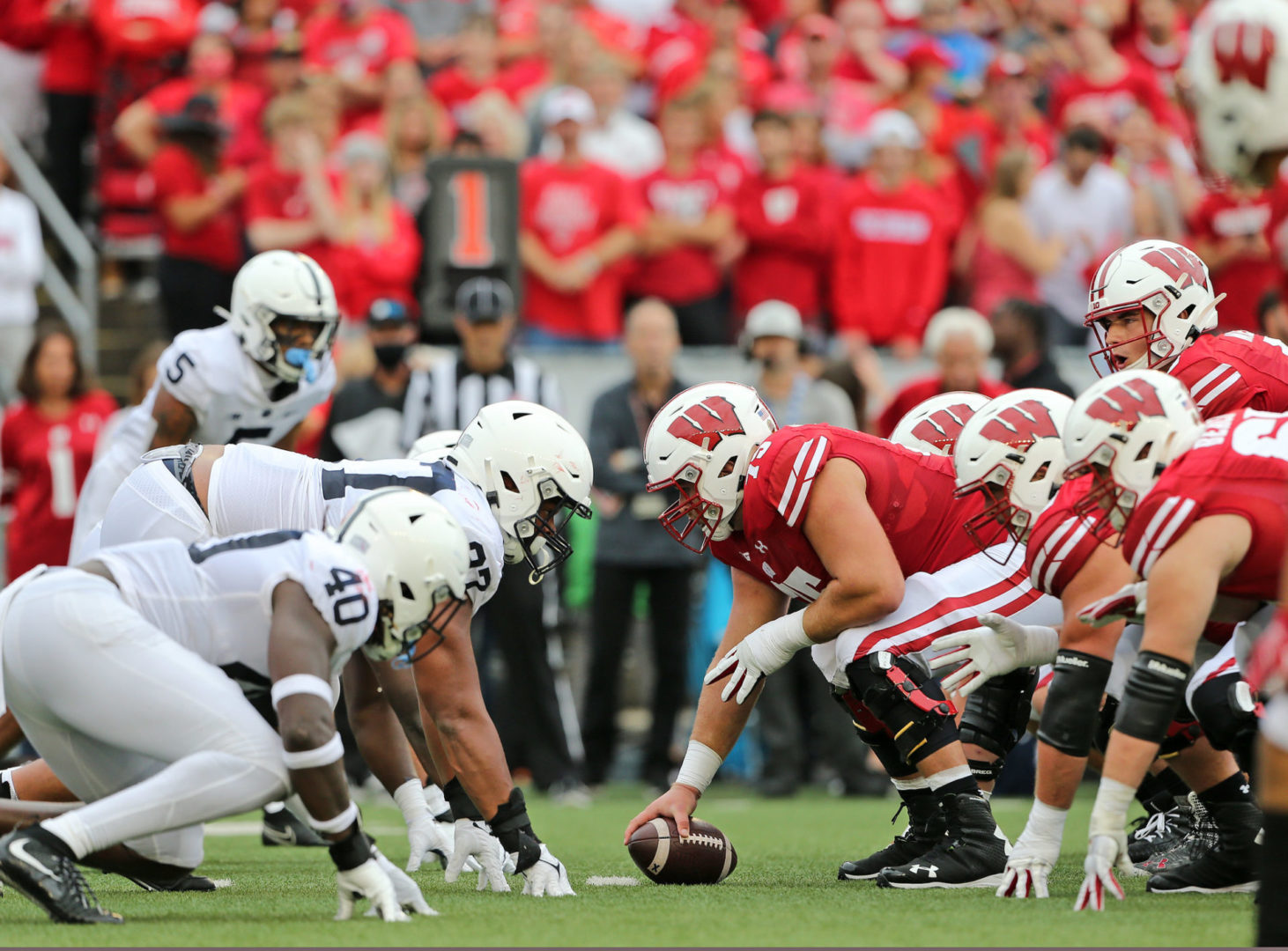
Photo by Paul Burdick

Photo by Paul Burdick
During another lengthy TV timeout at Beaver Stadium in the third quarter of the Penn State-Auburn game, a friend commented on how games seemed to be getting longer and longer. Obviously college football still has four 15-minute quarters but it certainly seemed to be taking longer to play the games.
There can never be enough college football, BUT we’re not getting more football. So by the time you leave your tailgate, stand in line, go through security, watch the game and get back to your car, the 60 minutes of football has turned into an odyssey.
So the games may seem longer, but is that actually backed up by data and facts?
After college football largely adopted NFL clock rules to speed up games, in 2008 the average college game nationally took 3:09 start to finish. That was just a few minutes longer than the NFL average.
That was then, so where are we now? From 2008 the length of games rose 15 minutes to an all-time record of 3:24 in 2020. And what about 2021?
With 61 of 105 total Big Ten football games already in the books, the average length of Big Ten games in 2021 is 3:27:28. Seven of the 14 conference teams are averaging more than the 3:24 national record last year. There have been three games over four hours: Ohio State vs. Tulsa, Indiana vs. Cincinnati, and Wisconsin vs. Notre Dame.
So what impact does this have on game attendance? No one can be completely sure, but attendance numbers have been slipping as game lengths rise. It may be causal, but it may not be.
From 2014 to 2018 FBS attendance dropped 7.6%. And what about the SEC, where “It Just Means More?” From 2014 to 2019 SEC attendance was down 7.5%. So, by 0.1% it does mean more…slightly. By comparison over that same span, Major League Baseball, the sport that everyone says is dying, saw its attendance drop by 7.1%, a lower decrease than college football.
And while in Major League Baseball the length of the games is widely blamed for their falling attendance, the average length of their games in 2021 was just 3:10.
With the 2020 pandemic-impacted numbers, we have to go back to 2019 for the last full attendance season. That year the SEC had its lowest attendance since 2000; the Big Ten’s was its lowest since 1993; the ACC’s was its lowest since 1999; and the PAC 12 had it’s lowest attendance since 1978. One suspects that 2021 will show a rebound because of the year off, but the longer-term trends are undeniable. The ominous trends are discussed in whispered tones in the halls of athletic departments around the country.
Throwing out the 2020 pandemic-impacted numbers, in 2019 the SEC had its lowest attendance since 2000, the Big Ten’s was its lowest since 1993, The ACC’s was its lowest since 1999 and the PAC 12 had it’s lowest attendance since 1978. One suspects that 2021 will show a rebound because of the year off, but the longer-term trends are undeniable. The ominous trends are discussed in whispered tones in the halls of athletic departments around the country.
More food for thought: Many college football attendance numbers reflect tickets distributed, not actual scanned-in attendance. The tickets may be sold, but not all those people are in the stadium buying concessions or in town spending money.
A Wall Street Journal survey in 2018 found that only 71% of the people who bought tickets actually went to the games. The internal “scanned-in” attendance numbers at some major programs would stun people and correlate almost exactly to that Wall Street Journal number.
Now, there are those who will point to strong TV ratings this year. No one disputes that viewing interest in college football remains strong. Those numbers, like the NFL’s numbers, should remain strong, bolstered by gamblers placing legal bets on games from more places than ever before (including their phones). While talk of point spreads and betting was verboten during college games for many years, broadcasters routinely discuss those things now.
So where does college football go to tighten game times? The schools can’t go to the networks and ask for fewer commercials, so the fixes will have to come from game management adjustments.
College football’s secret is that it is more beholden to TV money than ever before. For years, major football programs made big profits just from stadium and game revenues. That is not the case for most programs anymore. Spending on football has exploded while game-day revenue has flattened and even fallen compared to the rate of inflation.
Full houses of paying customers spending money on parking, programs and concessions used to generate more money than the broadcast rights. But that dynamic has turned, creating an addiction to TV money that will for the foreseeable future give the networks leverage on game days.
But that is a topic for another time and another column…
Average Length of Big Ten Games 2021
Michigan State 3:41:20
Ohio State 3:36:40
Maryland 3:35:50
Indiana 3:31:12
Rutgers 3:30:50
Penn State 3:30:30
CONFERENCE AVERAGE 3:27:28
Nebraska 3:26:43
2020 NATIONAL AVERAGE 3:24:00 (All-Time Record length)
Illinois 3:23:24
Purdue 3:23:12
Wisconsin 3:22:28
Iowa 3:22:00
Minnesota 3:16:12
Northwestern 3:14:00
Michigan 3:17:40
Receive all the latest news and events right to your inbox.

80% of consumers turn to directories with reviews to find a local business.